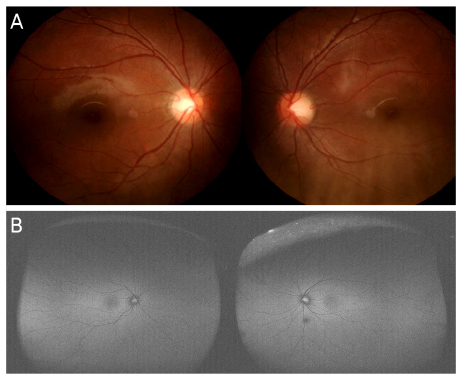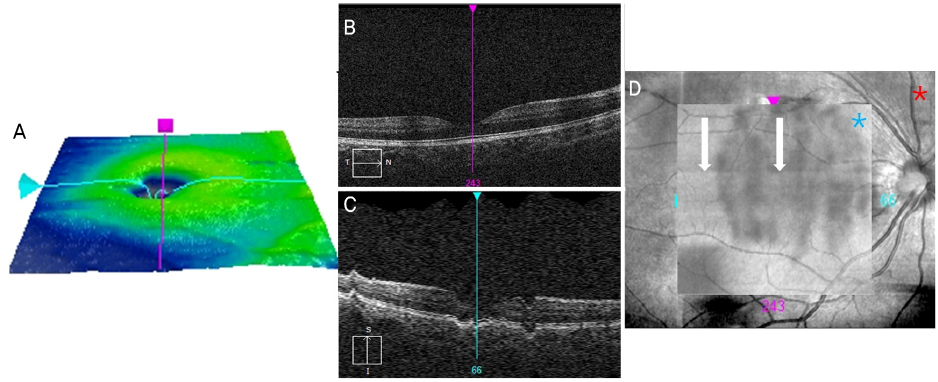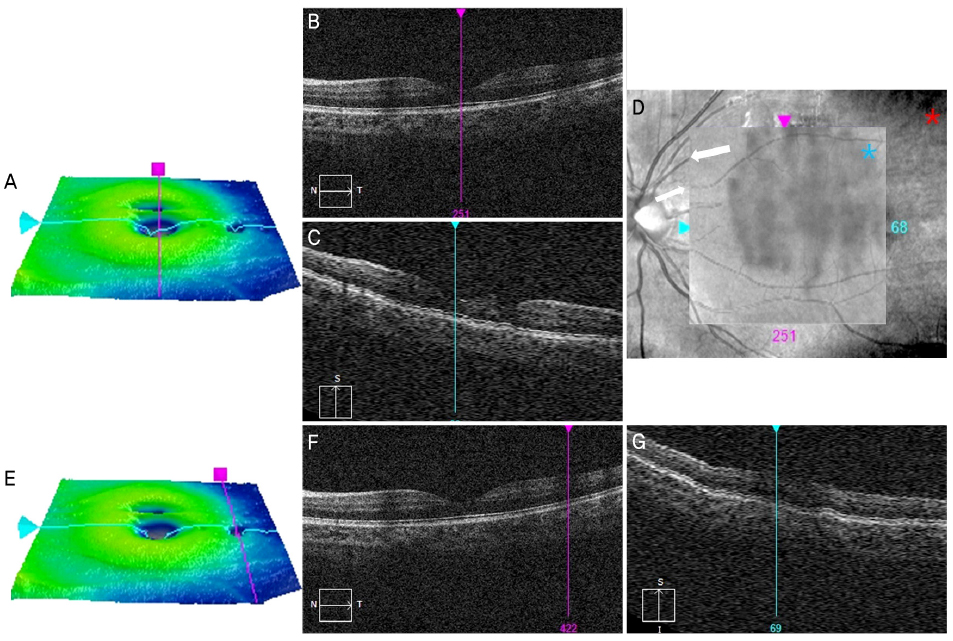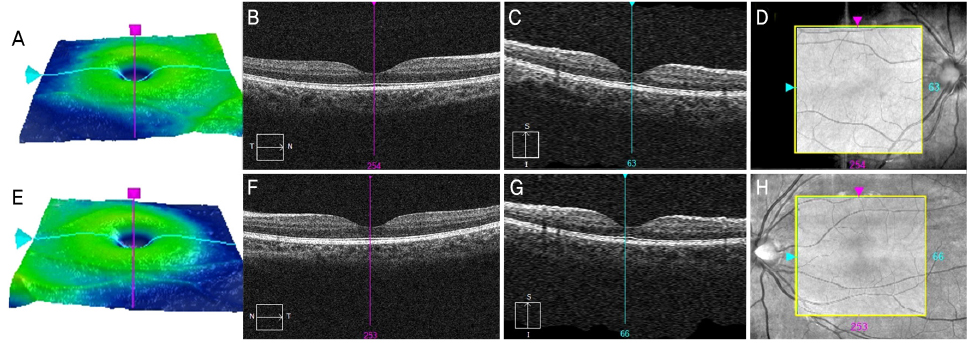J Korean Ophthalmol Soc.
2017 Aug;58(8):1003-1007. 10.3341/jkos.2017.58.8.1003.
A Case of Double Fovea Artifact Detected with Spectral-domain Optical Coherence Tomography
- Affiliations
-
- 1Siloam Eye Hospital, Seoul, Korea. icyyang1@gmail.com
- 2The Institute of Vision Research, Department of Ophthalmology, Yonsei University College of Medicine, Seoul, Korea.
- KMID: 2388192
- DOI: http://doi.org/10.3341/jkos.2017.58.8.1003
Abstract
- PURPOSE
In the present study, a case of double fovea artifact on spectral-domain optical coherence tomography (SD-OCT) was reported.
CASE SUMMARY
A nine-year-old male presented with blurred vision of both eyes. His best corrected visual acuity (BCVA) was 20/20 in both eyes, and complete ophthalmologic evaluation including fundus examination and fundus photography revealed no abnormality in both eyes. He underwent SD-OCT imaging with the Cirrus HD-OCT. The Macular Cube 512 × 128 protocol of his right eye revealed an unusual pseudo-duplication of the fovea in the vertical meridian. The same protocol in his left eye also rendered a pseudo-duplication of two foveas in the vertical and horizontal meridians on the retinal thickness map. Re-examination with the same OCT system and protocol was performed two weeks later after the patient received counseling on fixation during the examination, and it revealed normal contour of the fovea in both eyes.
CONCLUSIONS
Double fovea artifact seen in SD-OCT is a rare artifact that can possibly lead to misdiagnosis and inappropriate clinical treatment. Since the artifact was resolved with better fixation of the patient, repeating the scan with better patient compliance is necessary when such an artifact is encountered.
MeSH Terms
Figure
Reference
-
1. Kim US. Optical coherence tomography. Clin Neuroophthalmol. 2014; 4:17–21.2. Han IC, Jaffe GJ. Evaluation of artifacts associated with macular spectral-domain optical coherence tomography. Ophthalmology. 2010; 117:1177–1189.e4.3. Ho J, Sull AC, Vuong LN, et al. Assessment of artifacts and reproducibility across spectral- and time-domain optical coherence tomography devices. Ophthalmology. 2009; 116:1960–1970.4. Ray R, Stinnett SS, Jaffe GJ. Evaluation of image artifact produced by optical coherence tomography of retinal pathology. Am J Ophthalmol. 2005; 139:18–29.5. Baskin DE, Gault JA, Vander JF, Dugan JD Jr. Double fovea artifact. Ophthalmology. 2011; 118:429.e1.6. Kalliath J, Shukla D. Foveal duplication artifact with spectral-domain optical coherence tomography. Ophthalmic Surg Lasers Imaging Retina. 2013; 44:94–96.7. Behera UC, Shukla D, Kim R. Pseudoduplication of fovea in a human eye. Arch Ophthalmol. 2007; 125:1428–1430.
- Full Text Links
- Actions
-
Cited
- CITED
-
- Close
- Share
- Similar articles
-
- Choroidal Thickness at the Outside of Fovea in Diabetic Retinopathy Using Spectral-Domain Optical Coherence Tomography
- Comparison of the Efficacy between Time and Spectral Domain Optical Coherence Tomography for the Identification of Vitreomacular Interface
- Artifacts Associated with Spectral-Domain Optical Coherence Tomography
- Three Cases of Outer Retinal Tubulation in Bietti's Crystalline Dystrophy
- A Case of Ocular Toxoplasmosis Imaged with Spectral Domain Optical Coherence Tomography





